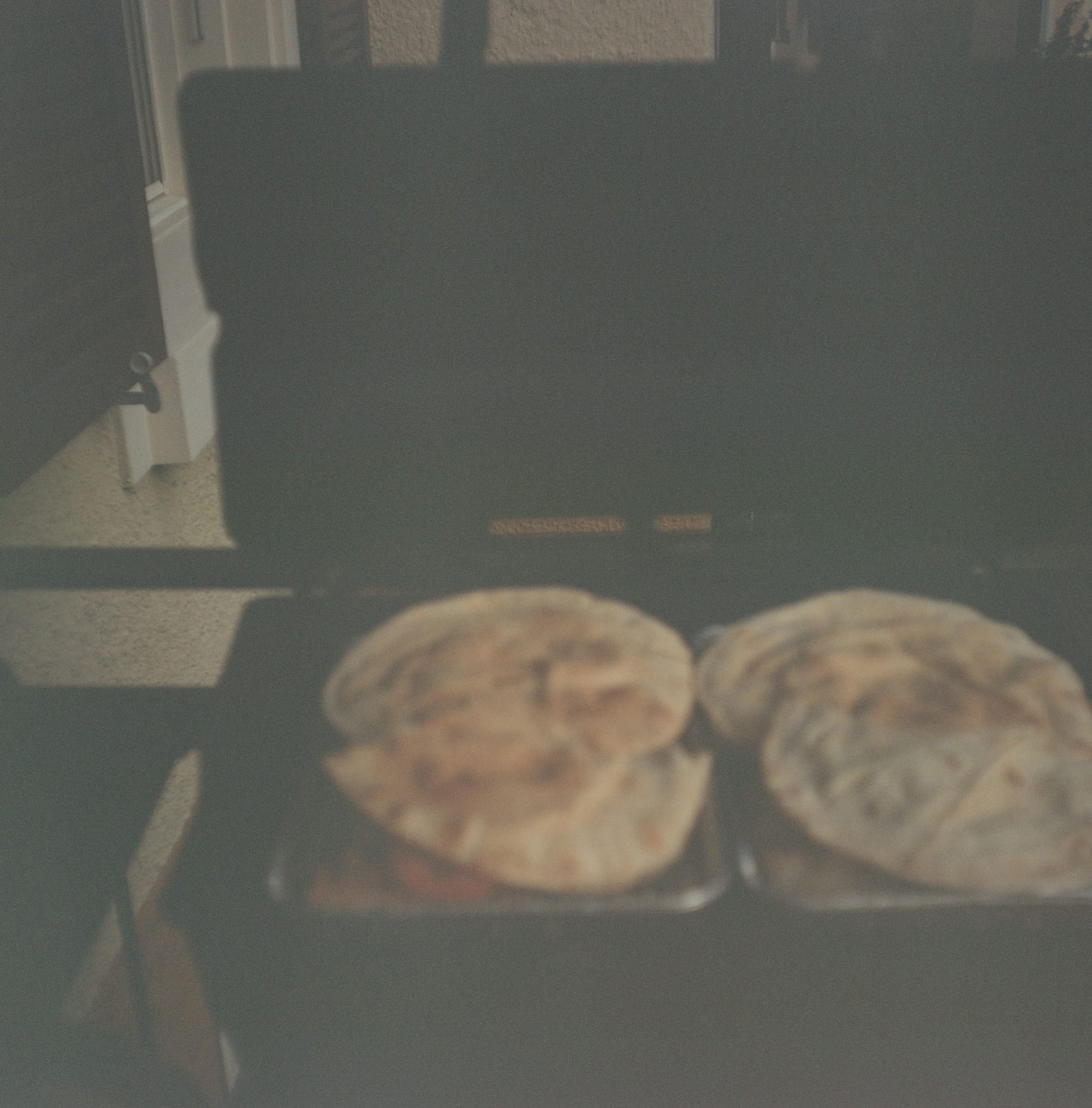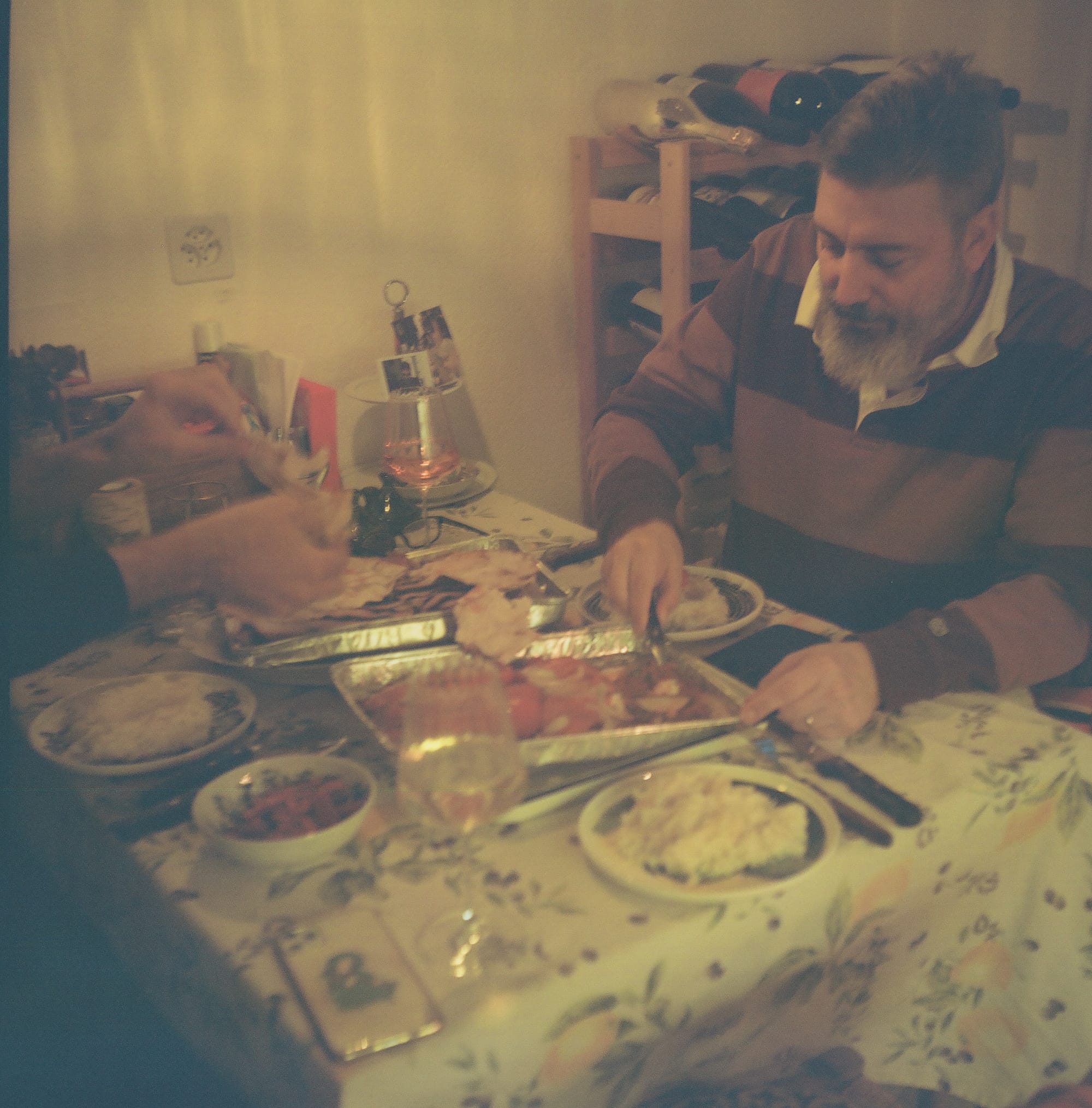What to eat IRAQ 🇮🇶 Masgouf
Masgouf is an ancient Iraqi method for grilling fish, with roots extending to Sumerian and Babylonian times. Sumerian texts reference methods of preparation that are very similar to masgouf...

Masgouf
Published November 1, 2024 · by Amanda Rivkin Häsler
Mesopotamian cuisine dates back 6,000 years. There is not much older than it, or arguably more delicious, though we have tried for centuries to reinvent the wheel and treat the ancient as somehow primitive. But let history record that when the true fervor of primitive thought takes hold in the modern sense in the form of remigration, we will all by force of will or collective delusion return to where we came from. That place will be Ur in southeastern Iraq, not some Aryan flight of fancy, and anything less would be an egregious historical error.
Facts are facts, not feelings. Engravings found on ancient artifacts that belonged to Sumerians, Akkadians, Babylonians and Assyrians in present day Iraq indicate some of the recipes prepared in temples during religious festivals are in fact some of the earliest culinary artefacts in history. These are some of humanity’s earliest, most advanced civilizations.
Masgouf is an ancient Iraqi method for grilling fish, with roots extending to Sumerian and Babylonian times. Sumerian texts reference methods of preparation that are very similar to masgouf, according to Nawal Nasrallah, a former English professor at the University of Mosul and author of Delights from the Garden of Eden: A Cookbook and a History of the Iraqi Cuisine.
A joint Italian-Iraqi archeological dig found plates near the ancient ruins of Ur in southern Iraq said to contain the remains of a serving of masgouf. And it is mentioned as one of 600 recipes included in the first Arabic cookbook, Kitab al-Tabih (The Book of Dishes) by Ibn Sayyar al-Warraq.
The Los Angeles Times reporter Nabih Boulos visited the Qreeiat district of Baghdad in 2020 for masgouf and wrote that masgouf “inspires a nostalgia for their country as it was in its heyday, when it was counted as a land of endless bounty and its capital a lodestar in the region.”
Boulos also tragically chronicles how, after the U.S. invasion in 2003, it was soon not safe to eat from Baghdad’s rivers as, “For a while, they were the prime dumping ground for the victims of Iraq’s horrific sectarian bloodletting. And carp are bottom feeders. Muslim clerics issued a fatwa banning the consumption of such carp.”
Since the war ended, though, carp are again abundant in the market. Much of the masgouf served in Iraq today come from pools in the Iraqi countryside, canals extending from the Tigris.
Traditionally, freshwater fish, such as local varieties of carp, from the basin of the Tigris and Euphrates rivers is best. The carp is butterflied, marinated and grilled over flames using fruit-tree wood in order to impart a delicate and unique flavor from the smoke. Fig and apricot trees are particularly fragrant.
Baghdad long prided itself on having the best masgouf. The Abu Nawas district on the shores of the Tigris is perhaps most famous for masgouf. But butterflied, marinated, and grilled masgouf can be found all over Iraq, especially in locations near the Tigris and Euphrates rivers. In postwar Iraq, the diaspora has brought the dish with it to new homes across the region, with restaurants in Amman and Damascus now specializing in the delicacy.
To prepare masgouf, the fish is caught alive and then clubbed to kill it before it is partially scaled and gutted. It is then split lengthwise down the back, washed and spread out into a single flat piece. If using carp per traditional Iraqi methods, the fish becomes a large symmetrical circle. It is then prepared with a marinade of olive oil, rock salt, tamarind and ground turmeric. Crushed tomatoes and cilantro are sometimes added to the marinade.

If following proper traditional methods, the fish is then impaled with two iron skewers, placed in a big clamshell-shaped grill with a handle that locks it in places and then slow roasted over a fire, not unlike a rotisseries chicken if the chickens were spun on the spokes of a wheel instead of impaled through the center with a rod.
The cooking takes one to three hours and in this time, if following tradition, several meze and some drinks, historically often beer and arak for the men, are consumed by guests awaiting the ancient delicacy. When the fish is ready, it is laid on the coals, which helps to crisp the skin as well as separate it from the meatier part of the fish once it is served.
The whole fish is then laid on a large tray, garnished with lime or lemon, and served with sumac-dusted onions and Iraqi pickles. In Baghdad, sometimes a little mango chutney finds its way into the final presentation as well. The tray is then covered in a flatbread to keep everything hot until it is served.

Traditionally in Baghdad, Wednesdays and Fridays are the most popular days to eat masgouf, with locals flocking to carp sellers operating out of flatbed trucks roadside. Another popular procurement method historically, was for boatmen to come and offer the dish to picnickers and those at riverside cafés along the Tigris River, starting at around 9:30 p.m. on hot summer nights, taking orders and preparing it while those gathered drank and shared snacks with family and friends.
However you opt to enjoy masgouf or a modern variation of it beyond the borders of the fragile state of Iraq these days, whether served at a restaurant operated by one of many Iraqis that now form a diaspora dotting the Arab world and the globe, or simply at home, it is worth recalling a Sumerian proverb: “Things may be traded in the city, but it is the fisherman who brings the food.” Or, as Henry James, wrote at the end of The Turning of the Screw, “We shall never again be as we were!”

Recipe
Ingredients:
4 large carp or other white fish flanked and deboned (we used dorado or sea bass)
Maldon salt
1 tablespoon curry powder
Vegetable oil
6 small white onions
3 shallots
2 heirloom tomatoes
20 grams of parsley
2 tablespoons tomato paste
1 lemon
1 tablespoon white wine vinegar
2 tablespoons spicy paprika
3-4 Arab-style pita flatbreads
Step 1: Remove fish heads and tail. Debone leaving skin but filets. Run under cold water if necessary, pat dry. Rub with salt and curry. Set aside.
Step 2: Dice 4 onions and 3 shallots and fry in a pan with vegetable oil salt on medium heat.
Step 3: When onions begin to get soft add one of the tomatoes, diced.
Step 4: Add parsley, tomato paste, lemon juice, vinegar and spicy paprika. Stir until it forms a ragu.
Step 5: Slice 2 onions and one tomato.
Step 6: Place fish on grilling pans and spread the ragu over the fish thinly. Place onions and tomato on top. Cover with flatbread and place on grill. Put another grill pan on top and flip after approximately five minutes.
Step 7: Remove from grill and serve on a tray with vermicelli rice and Middle Eastern pickles.
Tips, tricks and notes:
We did not have a grill basket, but grill pans available at any grocery store or gas station work nicely.
We bought Arab-style large, flat pita bread at Bazar d’Istanbul in Vevey after we ate Iraqi food. Also Bern has Levant Supermarkt located at Genfergasse 8 near the rail station which opened in early 2022. Flatbread is also available at Furkan Metzgerei, a Turkish halal butcher shop, located at Schlossstrasse 99A in Bern.
Learn where to eat Iraqi food in Switzerland.
Follow our social media pages @swissglobaldining on Instagram, TikTok and YouTube